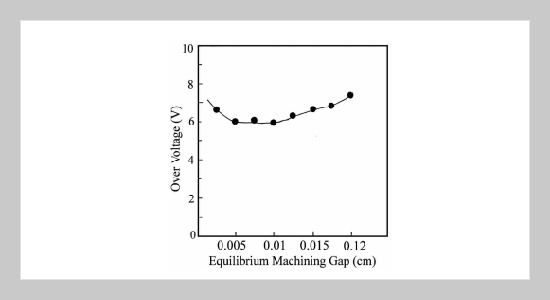REFERENCES
- [1] Wilson, J. F., “Practical and Theory of Electrochemical Machining,” Wiley Interscience, New York, NY, U.S.A. (1971).
- [2] Mishra, P. K., “Non-Conventional Machining,” Narosa Publishing House, New Delhi, India (1997).
- [3] Jain, R. K., “Production Technology,” Khanna Publishers, Delhi, India (1991).
- [4] Hocheng, H., Kao, P. S. and Lin, S. C., “Prediction of the Eroded Profile during Electrochemical Machining of Hole,” Proc. JSME/ASME Int. Conf. Materials and Processing, pp. 303�307 (2002).
- [5] Keown, Mc. P. A., “The Role of Precision Engineering in Manufacturing of the Future,” Annals CIRP, Vol. 36, pp. 495�501 (1987).
- [6] Ikawa, N. et al., “Ultra Precision Metal Cutting the Past, The Present and Future,” Annals of CIRP, Vol. 40, pp. 551–554 (1991).
- [7] Zhou, J. J., Zhai, X. B., Pang, G.B., Li, H. Y., Xu, W. J. and Guo, L. S., “Research on Pulse Electrochemical Finishing,” Journal of Dallan University of Technology, Vol. 43, pp. 311�314 (2003).
- [8] Egashira, K., Masuzawa, T., Fugino, M. and Sun, X-O, “Application of USM to Micro Machining by on the Machine Tool Fabrication,” International Journal of Electromachining, Vol. 2, pp. 31�36 (1997).
- [9] Brinksmeier, E., Preu, W., Reimer, B. O. and Sigel, R., “Manufacture of Shock-Wave Target Foils for Nuclear Fusion Research,” Proc. of the 3rd Int. Conf. on Ultra Precision in Manufacturing Engineering, pp. 401�404 (1994).
- [10] Schultze, J. W. and Bressel, A., “Principal of Electrochemical Micro- and Nano-system Technologies”, Electrochimica Acta, Vol. 47, pp. 3�21 (2001).
- [11] Bhattacharyya, B., Doloi, B. and Sridhar, P. S. “Electrochemical Micromachining: New Possibilities for Micro-manufacturing,” J. Material. Proc. Tech., Vol. 113, pp. 301–305 (2001).
- [12] Rumyantsev, E. and Dovydev, A., “Electrochemical Machining of Metals,” MIR Publication, Moscow, Russia (1989).
- [13] McGeogh, J. A., “Principles of Electrochemical Machining,” Chapman and Hall, London, UK (1974).
- [14] Kubasov, V. and Zuretsky, S., “Introduction to Electrochemistry,” Mir-Publishers, Moscow, Russia (1987).
- [15] “Electrochemical Machining in Production Technology,” HMT, Bangalore, Tata McGraw Hill Publishing Company, New Delhi, India, p. 478 (1980).
- [16] Kahles, John F., in “Electrochemical Machining edited by Tayler Lynian, Metals Hand Book,” 8th Edition, Vol. 3, Machining American Society for Metals; Metals Park, OH, U.S.A., (1967).
- [17] Glastone, S., “Electrochemistry, in Text Book of Physical Chemistry,” 2nd Edition, Macmillan India (1990).
- [18] De Barr, A. E. and Oliver, D. A., “Electrochemical Machining,” Macdonald & Co. Ltd., London, UK Chapter 5 (1968).
















